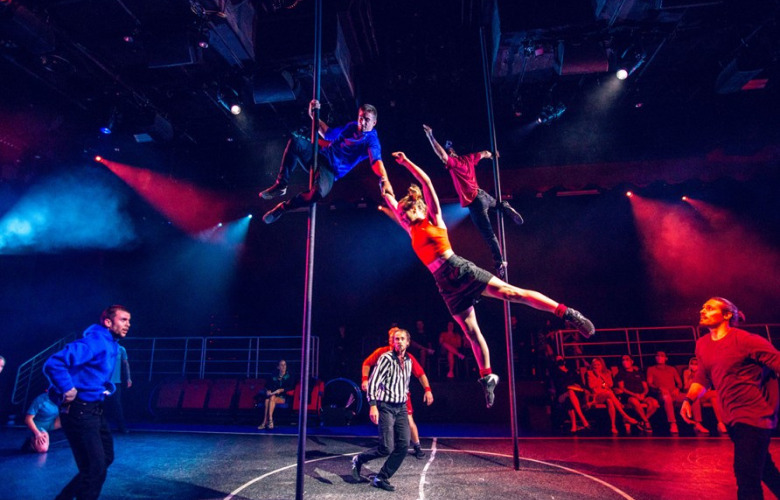
In this November edition of Half-Hour, I’ll discuss the significance of culture, elucidating how it can improve employee experiences and foster talent retention. We will delve into the unique challenges and opportunities the entertainment industry presents and examine how a positive workplace culture can address these challenges.
Culture is pivotal in shaping the work environment, encouraging employee buy-in, and retaining top talent. In the context of the entertainment industry, where creativity, innovation, and collaboration are essential, the impact of workplace culture is even greater.
The entertainment industry vastly encompasses many sectors, including film, television, music, theater, gaming, and more. It is an industry characterized by fierce competition, rapid technological advancements, and the demand for constant innovation, especially with the onset of artificial intelligence. Our dynamic workplaces necessitate a culture that accommodates and harnesses creativity while providing stability for us to feel supported. Let’s delve into how culture can enhance our work.
But what is culture exactly, and why does it even matter? Culture refers to the shared values, beliefs, and practices that define an organization’s identity. It encompasses the way employees interact, the company’s mission and vision, leadership styles, and the overall vibe as a whole. Culture goes beyond the standard office dynamics, and the way we establish culture through things such as the way we approach hard conversations, give feedback, set boundaries, and challenge our team without fear matter a lot.
A strong workplace culture can encourage employees to push boundaries, think outside the box, and create groundbreaking ideas. By fostering an environment where risk-taking is encouraged, and failures are seen as opportunities for growth, organizations can tap into the full creative potential of their talent. When employees fear getting reprimanded for doing something outside of the norm, it hampers innovation and creative approaches to unique challenges that inevitably surface in productions.
Our work, which often involves complex, interdisciplinary, and interdepartmental crossover, requires seamless collaboration between individuals with diverse skill sets. A culture that values teamwork and fosters open, transparent communication can significantly enhance the quality and efficiency of completing projects on time and beyond expectations—even in ways unknown at the beginning. When teams feel allowed to explore and work on creative solutions as they are presented, new ideas can surface, and true collaborative efforts will emerge.
A positive workplace culture can have a profound impact on employee experiences in the entertainment industry. Our work is demanding, with long working hours and often in high-pressure situations. A culture that promotes work-life balance prioritizes employee well-being and flexibility when possible and provides a supportive environment that fosters job satisfaction. When employees are happy at work, they are more likely to be productive, creative, and committed to their organizations.
Organizations that invest in training, mentorship, and career development programs demonstrate a commitment to their employees’ long-term success, making employees more engaged and invested. Moreover, companies that promote employees to learn new skills and broaden their horizons that are outside of their job scope allow for curiosity to thrive.
More than ever, diversity and inclusion are essential pillars of creating and maintaining a positive workplace culture. In the entertainment industry, which has been criticized for its lack of diversity over the years and has come to light in recent years, organizations that actively promote diversity and inclusivity not only attract a broader range of talent but also create content that resonates with a more diverse audience.
When employees feel connected to an organization’s values and mission, they are more likely to stay loyal and committed. This loyalty translates into lower turnover rates and a stable, experienced workforce. It’s important for us to have our “why” and to learn how to communicate it with others so that we can lead and collaborate authentically. A company’s reputation and brand are closely tied to its culture. Our “why” can serve as a powerful recruitment tool because when the places we work for are known for their strong culture and employee-centric approach, it will attract new talent aligned with our core values and beliefs.
While the benefits of a positive workplace culture in the entertainment industry are evident, it’s important to acknowledge the challenges that organizations face when trying to cultivate an effective work culture.
The entertainment industry is notorious for its high turnover rates. Freelance work, short-term contracts, and project-based employment are common, making it difficult to establish long-term relationships with employees. Naturally, the competition for talent in our industry means that employees can sometimes have numerous options for where to work, making it challenging to retain talented employees. As people come and go, the group dynamics are constantly shifting and can make it difficult for a culture to settle, especially in short-term contracts.
The creative process can be unpredictable, with last-minute changes, long working hours, and tight deadlines. This unpredictability can create artistic disagreements and differences. Approaching these disagreements to balance creative freedom with artistic direction can be a significant challenge in maintaining a harmonious culture.
It is vital to be open and honest when communicating. Create channels for employees to voice concerns, provide feedback, and participate in decision-making. Offer flexibility in work arrangements and schedules when possible. This flexibility can help employees not only maintain a healthy work-life balance but also continue looking for and landing their next gig if they are on a contract. We all want to work.
Stay committed to fostering a diverse and inclusive workplace. We all have different lifestyles and ways of seeing the world, communicating, and understanding problems. Instead of seeing those as obstacles, let’s accept them and harness them as valuable assets to create stronger teams and better approaches to unique challenges along the way.
The entertainment industry is a dynamic field, and the power of workplace culture cannot be underestimated in shaping employee experiences and retaining talent.
A positive culture can foster creativity, encourage collaboration, and nurture talent, ultimately leading to more successful and resilient productions and organizations.
While the entertainment industry does present unique challenges in cultivating culture, organizations can overcome these hurdles, and by doing so, they can create workplaces where employees feel empowered to contribute their true selves, collaborate authentically, and thrive, leading to not only artistic success but also a sustainable and competitive advantage in the industry.
Also by Bryan Runion:


Bryan Runion is a professional Production Stage Manager whose credits include: Drawn to Life (Cirque du Soleil and Disney), Netflix’s Stranger Things: The Experience, Duel Reality (7 Fingers), La Perle (Dragone), The Voice of Tolerance (The Ministry of Education, UAE); Mastercard Experiences (Mastercard); Everybody Black (World Premiere), Queens (La Jolla Playhouse), Ken Ludwig’s The Gods of Comedy (The Old Globe), TEDx (Chula Vista), Mark Morris Dance Company, Joey Alexander Trio, Ukulele Orchestra of Great Britain (La Jolla Music Society), The Bridges of Madison County (Arkansas Rep). Bryan earn his M.F.A. at The University of California, San Diego and his B.A. at The University of Arkansas at Little Rock. He is a proud member of Actors’ Equity Association and The Stage Managers’ Association.
Read Full Profile© 2021 TheatreArtLife. All rights reserved.

Thank you so much for reading, but you have now reached your free article limit for this month.
Our contributors are currently writing more articles for you to enjoy.
To keep reading, all you have to do is become a subscriber and then you can read unlimited articles anytime.
Your investment will help us continue to ignite connections across the globe in live entertainment and build this community for industry professionals.